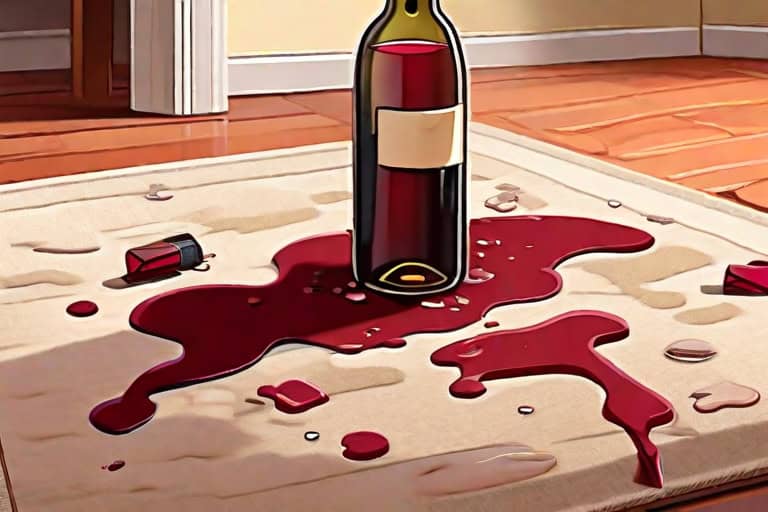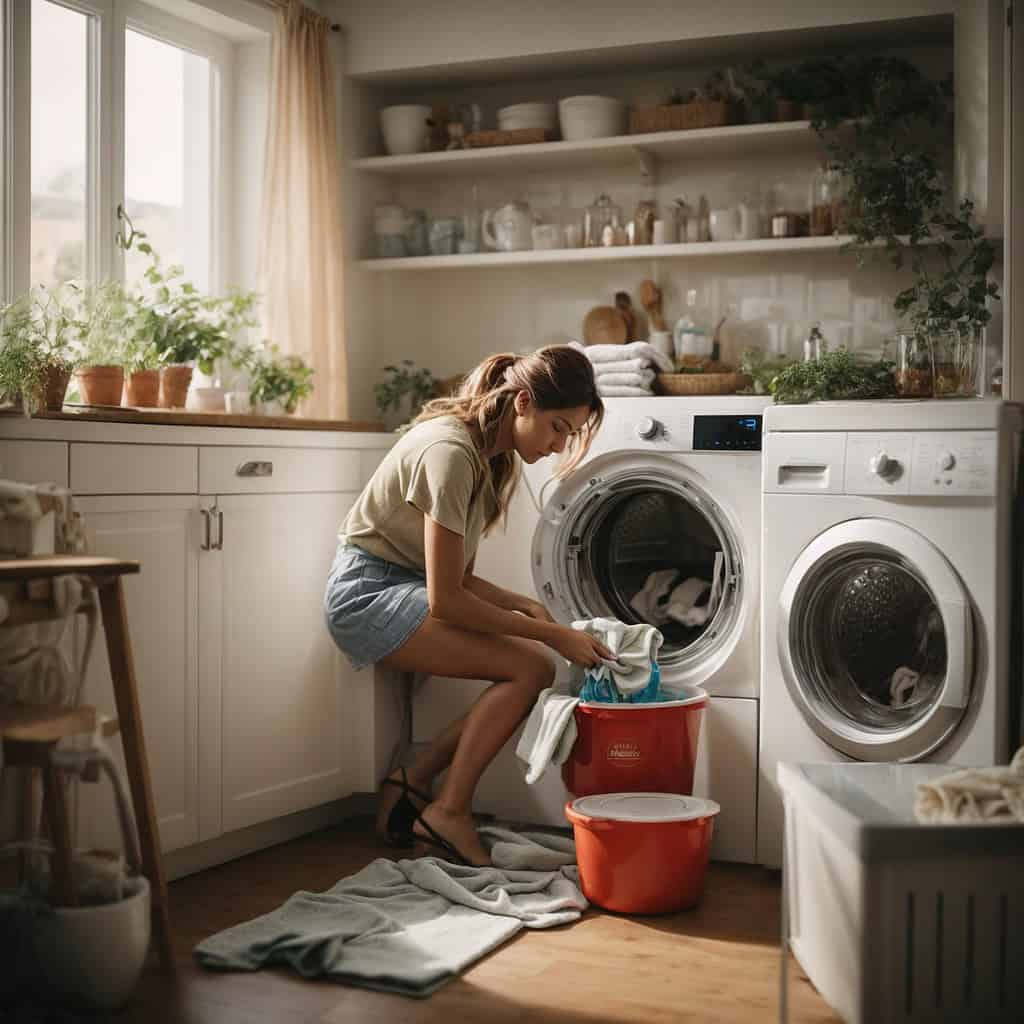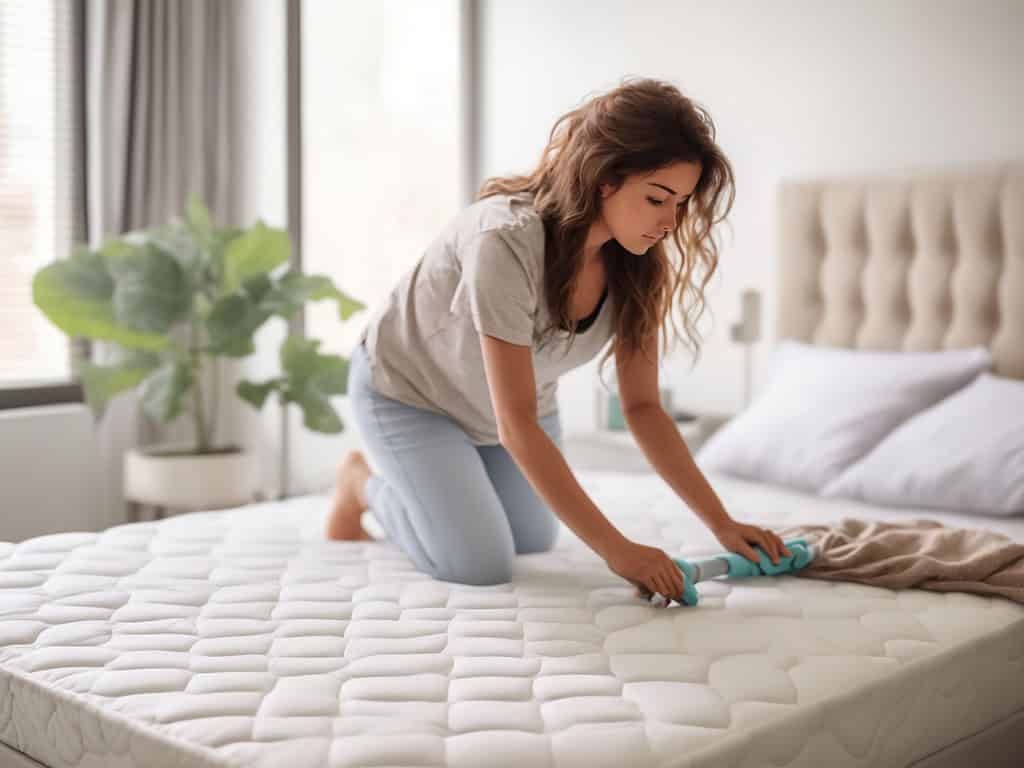For all you wine enthusiasts and social butterflies, there’s nothing quite like unwinding with a glass of your favorite vino after a long day. But what happens when that elegant evening takes an unexpected turn and your prized red or white ends up splattered on your pristine carpet?
Fear not, because in this guide, we’re about to reveal the secrets to becoming a true “Wine Lover’s Lifesaver.” With the expertise and tips we’re about to share, you’ll master the art of removing wine stains from your carpet as if they never happened.
No more fretting over accidents or sacrificing the enjoyment of your beloved wine. Whether you’re a seasoned sommelier or a casual sipper, our comprehensive guide is your go-to resource for tackling those wine stains and saving your carpet.
So, grab a corkscrew, pour yourself a glass, and let’s embark on this wine stain removal journey together. It’s time to transform those carpet calamities into mere memories. Are you ready to become a Wine Lover’s Lifesaver?
- Understanding the Chemistry of Wine Stains
- Identifying the Type of Carpet You Have
- Quickly Blotting the Wine Stain
- Avoiding Rubbing or Scrubbing the Wine Stain
- Creating Your Own DIY Wine Stain Remover
- Testing the Wine Stain Remover on an Inconspicuous Area
- Gently Applying the Wine Stain Remover on the Stain
- Allowing the Remover to Sit and Penetrate the Stain
- Rinsing the Stain with Cold Water
- Drying and Vacuuming the Carpet After Stain Removal
Understanding the Chemistry of Wine Stains
Wine stains are notorious for leaving behind stubborn marks on carpets and upholstery. Whether you accidentally spill your favorite Cabernet Sauvignon or a crisp Chardonnay, it’s important to understand the chemistry behind these stains to effectively eliminate them.
Wine stains are made up of pigments and tannins, which can quickly seep into the fibers of your carpet, leaving behind unsightly blemishes. These stains can be particularly challenging to remove if left unattended, as they tend to set and become more difficult to eradicate over time.
To successfully remove wine stains, it’s crucial to act quickly and minimize the spread of the stain.
Blotting the stain with a clean cloth or paper towel is the best course of action to prevent the wine from penetrating deeper into the carpet fibers.
Avoid the urge to rub or scrub the stain, as this can worsen the situation by spreading the wine and causing it to seep further into the carpet.
By gently blotting the stain and removing as much of the wine as possible, you can effectively reduce the likelihood of a permanent mark or residue.
Identifying the Type of Carpet You Have
When dealing with a wine spill on your carpet, the first step is to identify the type of carpet you have. This is important because different carpets may have different cleaning requirements.
If you’re not sure, take a closer look at the texture and material of your carpet. Is it a plush, shaggy carpet or a tightly woven one?
Is it made of synthetic fibers or natural materials like wool? Understanding the characteristics of your carpet will help you determine the best approach for removing the wine stain effectively.
Red wine spills can be particularly tricky to handle on carpets. They tend to spread quickly and saturate into the fibers if not addressed promptly.
So, take a quick assessment of the affected area and determine the size of the wine spill. Is it a small spot or has it spread over a larger section?
This information will help you gauge the amount of cleaning solution you will need and the intensity of the cleaning process.
Remember, different carpets may react differently to red wine spills, so it’s vital to consider the specifics of your carpet to ensure effective stain removal.
Quickly Blotting the Wine Stain
To tackle a wine stain on your carpet, the first step is to act quickly and blot the stain as soon as possible.
I cannot stress enough the importance of this step. Trust me, I’ve dealt with my fair share of spills in my time.
The key here is to gently blot the stain with a clean cloth or paper towel. Don’t go crazy with rubbing or scrubbing, as that will only make matters worse.
The goal is to absorb as much of the wine as you can before it sets into the carpet fibers. So, pat the stain, dab it, and let the cloth soak up the wine like a sponge.
But remember, don’t overdo it!
Too much aggression can actually push the wine further into the carpet, making stain removal even harder.
So go easy and take your time to ensure you’re just absorbing the wine without spreading it around.
This initial cleaning is essential for preventing the wine from permanently staining your carpet.
Once you’ve blotted as much of the wine as possible, you can move on to the next steps in our carpet care guide.
Avoiding Rubbing or Scrubbing the Wine Stain
Now, when it comes to dealing with a wine stain on your carpet, it is crucial to remember one golden rule: avoid rubbing or scrubbing the stain.
Trust me, I’ve learned this the hard way. So instead of going into panic mode and vigorously attacking the stain, take a deep breath and follow these gentle steps to minimize any further damage.
First, grab a clean cloth or paper towel and blot up as much of the wine as possible.
This will help to remove excess liquid and prevent the stain from spreading further.
However, make sure to do this in a dabbing motion rather than rubbing the stain back and forth. If the stain has already dried, you can try moistening it with some club soda or white wine to make it easier to blot up.
Next, when you reach for cleaning solutions, it’s important to choose wisely.
Avoid using harsh chemicals or bleach, as they can damage the carpet fibers.
Instead, gather some household items like baking soda, salt, hydrogen peroxide, vinegar, dishwashing liquid, ammonia, or a carpet cleaner specifically designed for stain removal.
These alternatives are generally milder on your carpets and can effectively tackle wine stains without causing further harm.
Creating Your Own DIY Wine Stain Remover
I always prefer using my own DIY wine stain remover when dealing with carpet stains. It’s a simple and cost-effective solution that works wonders.
To make my stain remover, I mix equal parts of dish soap and hydrogen peroxide in a spray bottle.
Then I add a few drops of white vinegar and shake it well. This powerful concoction has become my go-to carpet stain remover.
It works not only on wine stains but also on other tough stains like coffee or juice.
When using my DIY stain remover, I first blot the wine stain with a clean cloth or paper towel to remove any excess liquid.
Then I spray a generous amount of the remover directly onto the stain, making sure to cover the entire affected area.
I let it sit for a few minutes to allow the solution to penetrate the stain.
After that, I use a clean sponge or cloth to gently scrub the stain in a circular motion.
Once the stain is lifted, I rinse the area with cold water and blot it dry with a clean towel.
This method has saved me from expensive carpet shampoos or the hassle of steam cleaning. It’s a quick and effective spot-cleaning technique that never fails to impress.
Testing the Wine Stain Remover on an Inconspicuous Area
Before applying any homemade solutions or commercial stain removers on your carpet, it’s essential to test them on an inconspicuous area first.
This step is crucial to ensure that the fabric, textiles, or upholstery fibers of your carpet won’t be damaged or discolored. Home remedies and DIY solutions can be effective in removing wine stains, but not all carpets react the same way to different cleaning agents.
To conduct a proper test, choose a small, hidden area of the carpet, such as a corner or beneath a piece of furniture.
Apply a small amount of the wine stain remover on a clean cloth or sponge, and gently dab it onto the selected area.
Allow the solution to sit for a few minutes without rubbing or scrubbing.
After that, use a clean, damp cloth to blot the area and check for any changes in color or texture.
If there are no adverse effects, you can proceed with confidence to tackle the wine stain on the visible parts of your carpet. Remember, it’s better to be cautious and prevent any damage to your carpet than to regret it later.
Gently Applying the Wine Stain Remover on the Stain
Before diving into the process of gently applying the wine stain remover, it’s crucial to prepare the area for treatment.
First, grab a clean blotting cloth or absorbent paper and gently blot the stain to remove any excess liquid.
This step is particularly important because blotting helps prevent the stain from setting deeper into the carpet fibers.
So, make sure to avoid rubbing or scrubbing the stain, as this can actually push the wine deeper into the fibers and make it more challenging to remove.
Once the excess wine has been blotted, it’s time to bring out the wine stain remover.
If you have a store-bought stain remover specifically designed for carpet stains, carefully follow the instructions on the label.
However, if you find yourself in a wine stain emergency and don’t have a dedicated product on hand, fear not! You can create your own DIY wine stain remover using common household ingredients.
Just mix a small amount of mild dish soap with warm water and gently apply this solution onto the stained area using a clean cloth.
Remember, the key here is to be gentle and avoid saturating the carpet with excessive moisture.
Allowing the Remover to Sit and Penetrate the Stain

Once you have applied the DIY wine stain remover to the affected area of your carpet, it’s important to let it sit undisturbed for a period of time.
This step allows the remover to work its magic, breaking down the stubborn wine stain and loosening its grip on the carpet fibers.
You might be tempted to immediately start scrubbing or blotting the stain, but resist that urge and give the remover some time to do its job.
I cannot stress enough the importance of fast action when dealing with a wine stain. The moment you notice the spill, it is crucial to initiate a quick response.
Grab that bottle of DIY wine stain remover and apply it to the stain as soon as possible. Immediate attention to the stain will increase your chances of complete stain removal and prevent it from settling into the carpet permanently.
Prompt treatment not only helps to minimize the damage but also saves you from the frustration of dealing with a stubborn wine stain later on.
To summarize:
• Let the DIY wine stain remover sit undisturbed for some time
• This allows the remover to break down the stubborn wine stain
• It loosens the grip of the stain on the carpet fibers
• Avoid immediately scrubbing or blotting the stain after applying the remover
• Giving it time to work will increase chances of complete removal
Rinsing the Stain with Cold Water
To effectively remove a wine stain from your carpet, it is vital to rinse the stain with cold water.
This simple step will help to flush out any remaining wine and prevent it from setting further into the carpet fibers.
Remember, using cold water is crucial as hot water can actually set the stain, making it more difficult to remove.
After blotting the wine stain and applying your DIY stain remover, it’s time to move on to the rinsing stage.
I recommend getting a clean cloth or sponge and dampening it with cold water. Gently dab the stained area, working from the outside edges towards the center.
Avoid rubbing or scrubbing the stain, as this can spread it or push it deeper into the carpet. The goal here is to dilute the remaining wine and flush it out of the carpet fibers.
Once you have thoroughly rinsed the stain, pat the area dry with a clean towel, and prepare for the next step: drying and vacuuming the carpet after stain removal.
Drying and Vacuuming the Carpet After Stain Removal
After successfully removing the wine stain from your carpet, it’s important to ensure that the area is completely dry before resuming normal use.
Excess moisture can lead to mold and mildew growth, causing further damage to your carpet. To speed up the drying process, I recommend opening windows or using fans to improve air circulation in the room.
This will help evaporate any remaining moisture and prevent any potential odors.
Additionally, avoid walking on the treated area until it is fully dry to prevent any re-soiling or further damage.
Once the carpet is dry, it’s time to give it a thorough vacuuming to remove any loosened debris or residue.
Start by using a vacuum cleaner with a clean attachment nozzle. Slowly move the nozzle across the entire affected area, making sure to go over it multiple times to pick up any remaining particles.
For better results, consider using a vacuum cleaner with a rotating brush or beater bar, as this can help lift any trapped dirt or fibers.
Remember, regular vacuuming not only keeps your carpet clean, but it also helps maintain its appearance and prolong its lifespan.
How do I identify the type of carpet I have?
Look for any labels or documentation that came with your carpet, or consult a professional if you are unsure.
Why is it important to quickly blot a wine stain?
Blotting helps to absorb as much of the wine as possible before it sets into the carpet fibers.
Why should I avoid rubbing or scrubbing the stain?
Rubbing or scrubbing can push the wine deeper into the carpet and spread the stain, making it more difficult to remove.
Can I create my own DIY wine stain remover?
Yes, you can make a DIY wine stain remover using common household ingredients.
Should I test the wine stain remover on an inconspicuous area first?
Yes, it’s always a good idea to test the remover on a small, hidden area of the carpet to ensure it doesn’t cause any damage or discoloration.
How do I gently apply the wine stain remover on the stain?
Use a clean cloth or sponge to dab the stain remover onto the wine stain, being careful not to rub it in.
How long should I let the remover sit and penetrate the stain?
It is recommended to let the remover sit for a few minutes to allow it to break down the stain before proceeding.
Why should I rinse the stain with cold water?
Rinsing with cold water helps to remove any residue from the stain remover and prevent it from setting into the carpet.
How should I dry the carpet after stain removal?
Use a clean towel or paper towels to blot the area and remove excess moisture. You can also use a fan or open windows to aid in the drying process.
Is it necessary to vacuum the carpet after stain removal?
Vacuuming the carpet after stain removal helps to remove any remaining particles or debris and restore the carpet’s appearance.

Belinda Moore is a biochemist working for a leading German company, where she contributes to innovative research and development projects. Her work in biochemistry reflects her passion for science and dedication to advancing the field.
Outside of her professional life, Belinda loves to cook and enjoys sharing her expertise in stain removal through her part-time blog. Combining her scientific knowledge with practical household tips, she offers readers effective solutions for everyday challenges.




